Filter by
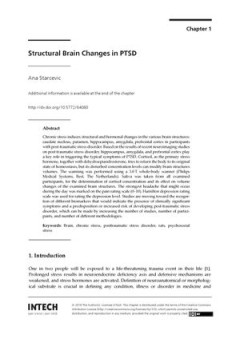
Structural Brain Changes in PTSD
Chronic stress induces structural and hormonal changes in the various brain structures: caudate nucleus, putamen, hippocampus, amygdala, prefrontal cortex in participants with post‐traumatic stress disorder. Based on the results of recent neuroimaging studies on post‐traumatic stress disorder, hippocampus, amygdala, and prefrontal cortex play a key role in triggering the typical symptoms of…
- Edition
- -
- ISBN/ISSN
- 9789535127284
- Collation
- -
- Series Title
- -
- Call Number
- -
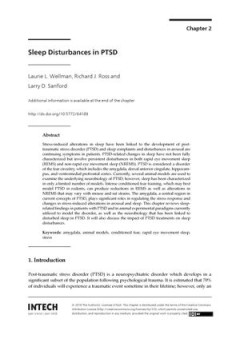
Sleep Disturbances in PTSD
Stress-induced alterations in sleep have been linked to the development of post-traumatic stress disorder (PTSD) and sleep complaints and disturbances in arousal are continuing symptoms in patients. PTSD-related changes in sleep have not been fully characterized but involve persistent disturbances in both rapid eye movement sleep (REMS) and non-rapid eye movement sleep (NREMS). PTSD is consider…
- Edition
- -
- ISBN/ISSN
- 9789535127284
- Collation
- -
- Series Title
- -
- Call Number
- -
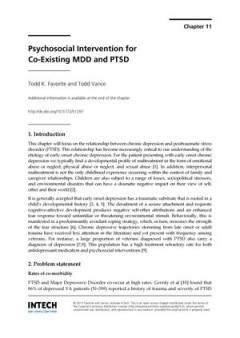
Psychosocial Intervention for Co-Existing MDD and PTSD
Psychosocial Intervention for Co-Existing MDD and PTSD
- Edition
- -
- ISBN/ISSN
- 9789535111474
- Collation
- -
- Series Title
- -
- Call Number
- -
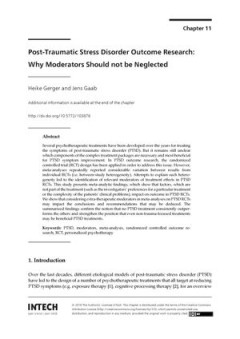
Post-Traumatic Stress Disorder Outcome Research Why Moderators Should Not Be…
Several psychotherapeutic treatments have been developed over the years for treating the symptoms of post-traumatic stress disorder (PTSD). But it remains still unclear which components of the complex treatment packages are necessary and most beneficial for PTSD symptom improvement. In PTSD outcome research, the randomized controlled trial (RCT) design has been applied in order to address this …
- Edition
- -
- ISBN/ISSN
- 9789535127284
- Collation
- -
- Series Title
- -
- Call Number
- -

The Pharmacological Frontiers in Treatment Resistant Major Depression
The Pharmacological Frontiers in Treatment Resistant Major Depression
- Edition
- -
- ISBN/ISSN
- 9789535111474
- Collation
- -
- Series Title
- -
- Call Number
- -
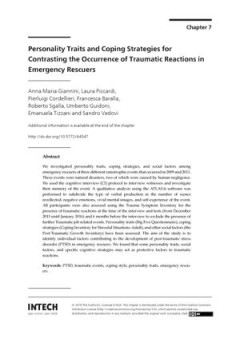
Personality Traits and Coping Strategies for Contrasting the Occurrence of Tr…
We investigated personality traits, coping strategies, and social factors among emergency rescuers of three different catastrophic events that occurred in 2009 and 2013. These events were natural disasters, two of which were caused by human negligence. We used the cognitive interview (CI) protocol to interview witnesses and investigate their memory of the event. A qualitative analysis using the…
- Edition
- -
- ISBN/ISSN
- 9789535127284
- Collation
- -
- Series Title
- -
- Call Number
- -
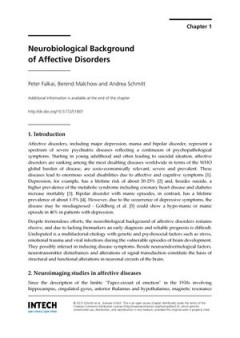
Neurobiological Background of Affective Disorders
Neurobiological Background of Affective Disorders
- Edition
- -
- ISBN/ISSN
- 9789535111474
- Collation
- -
- Series Title
- -
- Call Number
- -
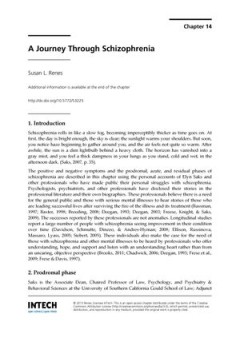
A Journey Through Schizophrenia
A Journey Through Schizophrenia
- Edition
- -
- ISBN/ISSN
- 9789535111474
- Collation
- -
- Series Title
- -
- Call Number
- -
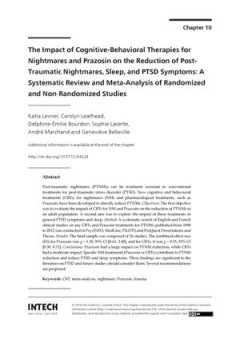
The Impact of Cognitive-Behavioral Therapies For Nightmares and Prazosin On T…
Post-traumatic nightmares (PTNMs) can be treatment resistant to conventional treatments for post-traumatic stress disorder (PTSD). New cognitive and behavioral treatments (CBTs) for nightmares (NM) and pharmacological treatments, such as Prazosin, have been developed to directly reduce PTNMs. Objectives: The first objective was to evaluate the impact of CBTs for NM and Prazosin on the reduction…
- Edition
- -
- ISBN/ISSN
- 9789535127284
- Collation
- -
- Series Title
- -
- Call Number
- -
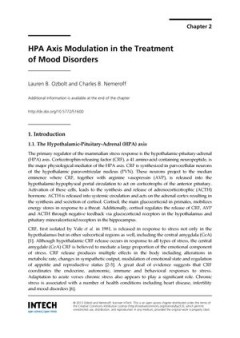
HPA Axis Modulation in the Treatment of Mood Disorders
HPA Axis Modulation in the Treatment of Mood Disorders
- Edition
- -
- ISBN/ISSN
- 9789535111474
- Collation
- -
- Series Title
- -
- Call Number
- -
 Computer Science, Information & General Works
Computer Science, Information & General Works  Philosophy & Psychology
Philosophy & Psychology  Religion
Religion  Social Sciences
Social Sciences  Language
Language  Pure Science
Pure Science  Applied Sciences
Applied Sciences  Art & Recreation
Art & Recreation  Literature
Literature  History & Geography
History & Geography